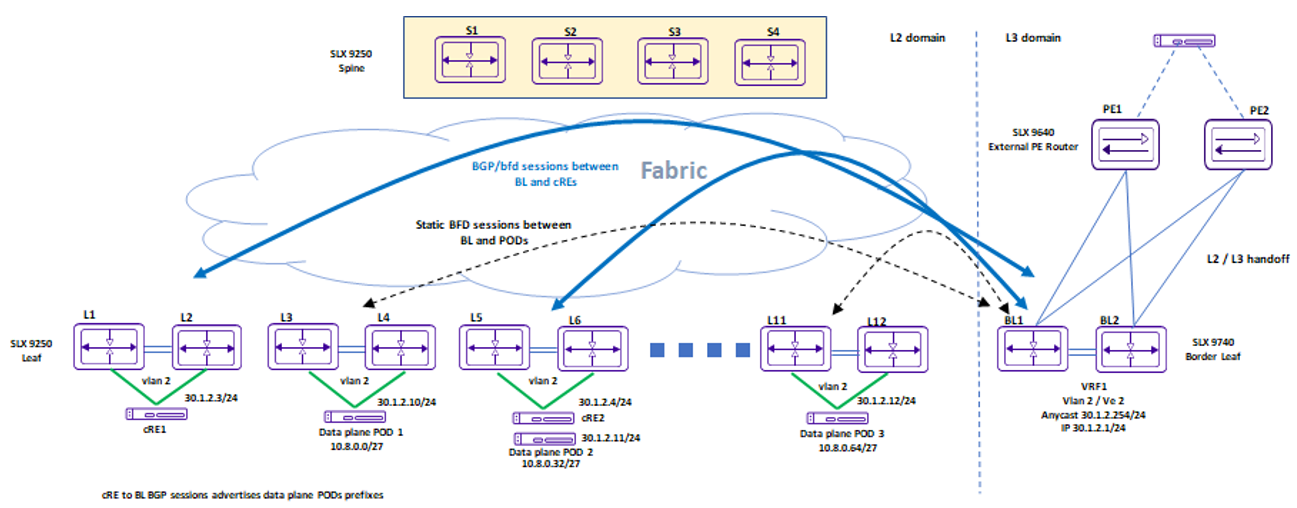Tenant VRF: Provide physical routers for centralized routing
Provide a list of border-leaf IPs on which the centralized router (the VRF) needs to be instantiated upon. If a given fabric has only one BL pair and user hasn‘t provided any BL pair as centralized router, then the only available BL pair will be used as centralized router by default.
Provide only one BL pair on which the centailized router (the VRF) needs to be instantiated upon.
VRF instantiation happens on the border-leaf devices during the EPG create/update operations.
User will not be able to provide leaf/spine/super-spine ips as the target devices for centralized routing.
VRF (with centralized routing enabled) and its dependent L3 configuration (anycast-ip, local-ip, VRF static route, VRF static route bfd, router bgp static/dynamic peer, and router bgp peer-group) will be instantiated only on the border-leaf(s) on which the parent VRF exists.

- Users must define the target
border-leaf device on which the VRF needs to be instantiated.
The VRF instantiation will happen only on those border-leaf devices and not on any other leaf/border-leaf devices.
- Users will not need to provide the
target border-leaf device on which the anycast-ip needs to be configured.
The anycast-ip configuration will happen automatically on the border-leaf devices on which the VRF is instantiated.
- Users must provide the border-leaf ip (on which the VRF is instantiated) for the local-ip configuration.
- Users must provide the border-leaf ip (on which the VRF is instantiated) for the VRF SR (Static Route) and VRF SR-BFD (Static Route – BFD) configuration.
- Users must provide the border-leaf ip (on which the VRF is instantiated) for the BGP static and dynamic peer configuration.
- Users must provide the border-leaf ip (on which the VRF is instantiated) for the BGP peer-group configuration.
VRF Create
efa tenant vrf create --name <vrf-name> --tenant <tenant-name>
--routing-type {centralized | distributed}
--centralized-router <list-of-border-leaf-routers>
Example
efa tenant vrf create –-name VRF1 --tenant tenant1
--routing-type centralized --centralized-router BL1-IP,BL2-IP
Carving out of VRFs on the border-leaf pairs
Users must instantiate VRFs on the border-leaf devices based on the L3 scale requirements. Supposing the fabric has 100 VRFs with 4K anycast-ip, then user can instantiate all 100 VRFs on a single border-leaf pair. If the L3 scale requirements are higher than the scale supported by a single border-leaf pair then additional border-leaf pair needs to be added.
